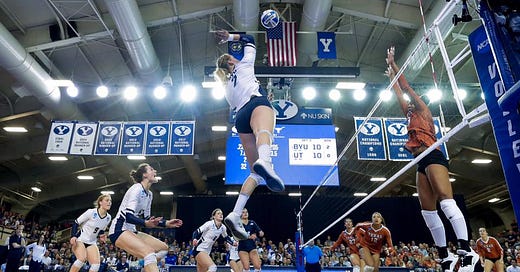How the Media Fell for a Racism Sham

(via Facebook)
A Brigham Young University paper scooped the New York Times. All the students did was practice basic journalism.
695
Last month, Rachel Richardson—the only black starter on the women’s volleyball team at Duke University—leveled a shocking accusation. She said that during her team’s August 26 match against Brigham Young University, fans inside the BYU arena in Provo, Utah inundated her with racist abuse and threats.
After the match, 19-year-old Richardson told her godmo…
Enjoying the story?
Enter your email to read this article and receive our daily newsletter.
Already have an account?
Sign In




